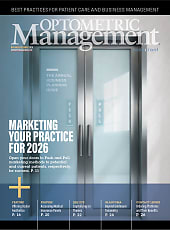In a large population-based cohort study published in JAMA Ophthalmology, researchers examined whether long-term use of topical atropine for myopia control increased the risk of ocular complications in children. The study, conducted by Yao-Lin Liu, MD, and colleagues at National Taiwan University Hospital in Taipei, analyzed data from more than 1 million Taiwanese children aged 8 to 15 years using Taiwan’s National Health Insurance Research Database from 2000 to 2021.
Among the 606,923 children with myopia who were included in the study, 67% (406,383) received atropine prescriptions. Over a median follow-up of more than 10 years, the incidence of ocular complications such as cataract, glaucoma, and maculopathy was higher in the myopia group (1.54 per 10,000 person-years) than in nonmyopic peers (0.96 per 10,000 person-years) and corresponded to an adjusted hazard ratio (aHR) of 1.49 (95% CI, 1.36–1.64).
However, no difference in complication rates was observed between atropine users and nonusers within the myopia group (both 1.54 per 10,000 person-years; aHR = 1.05 [95% CI, 0.93–1.18]). The risk did not increase with higher cumulative atropine doses (highest quartile aHR = 1.05 [95% CI, 0.89–1.25]). An elevated risk emerged only among children who were prescribed atropine for more than 3 years (3 to 5 years: aHR = 1.51 [95% CI, 1.17–1.94]; more than 5 years: aHR = 1.88 [95% CI, 1.37–2.57]), but this association disappeared when the analysis was limited to those who had high myopia (aHR = 1.10 [95% CI, 0.56–2.19]). The elevated risk was notable for cataracts (3- to 5-year group: aHR = 1.88; 95% CI, 1.32–2.68) and glaucoma (more than 5-year group: aHR = 2.77; 95% CI, 1.66–4.64), the researchers reported.
Overall, 1,258 myopic children developed ocular complications (833 with atropine, 425 without), compared with 786 in the nonmyopic cohort. Among myopic children, those who had high myopia had substantially greater risk of complications (aHR = 7.20 [95% CI, 5.85–8.86]) than those who had low or moderate myopia. Among the children who were prescribed atropine, the percentage of high myopia diagnoses increased with longer cumulative duration or higher cumulative dose.
Dr. Liu and colleagues concluded that atropine prescriptions were not associated with increased risk of cataract, glaucoma, or maculopathy in children who had myopia. They noted that the slightly elevated risk in long-duration users may reflect underlying myopia severity rather than a direct drug effect. However, associations between duration of medication use and long-term complications, as well as the long-term efficacy of atropine drops for myopia control—“including the initiation and adjustment of concentration, duration of application, and methods and timing of discontinuation”—warrant further research, they wrote, because “despite the prevalent use of atropine in Taiwan, the [prevalence] of myopia and high myopia have continued to increase during the past few decades.”
Study limitations included reliance on secondary claims data regarding atropine prescriptions vs approximate actual use and uncertainty from identifying outcomes only from diagnostic codes. The researchers wrote that these prescriptions as proxies for actual atropine use “should be interpreted as generating hypotheses about potential adverse effects of topical atropine for myopia in school-aged children, rather than establishing cause-and-effect relationships.” They also reported that refractive measurements were not performed, and the study design did not allow for evaluation of individual visual outcomes, such as visual acuity, peripheral visual field, accommodative amplitude, or phototoxic retinal structural or functional changes as a result of prolonged pupil dilation.
Aligned with the previous Atropine Treatment Long-term Assessment Study (ATLAS) study that found no significant increases in serious ocular complications in adulthood among 229 participants who were treated with atropine during childhood, “these findings support monitoring of children receiving atropine for myopia treatment if these results are confirmed by future studies that address the limitations of this investigation,” concluded Dr. Liu and colleagues.
A full list of author disclosures can be found in the published research.



